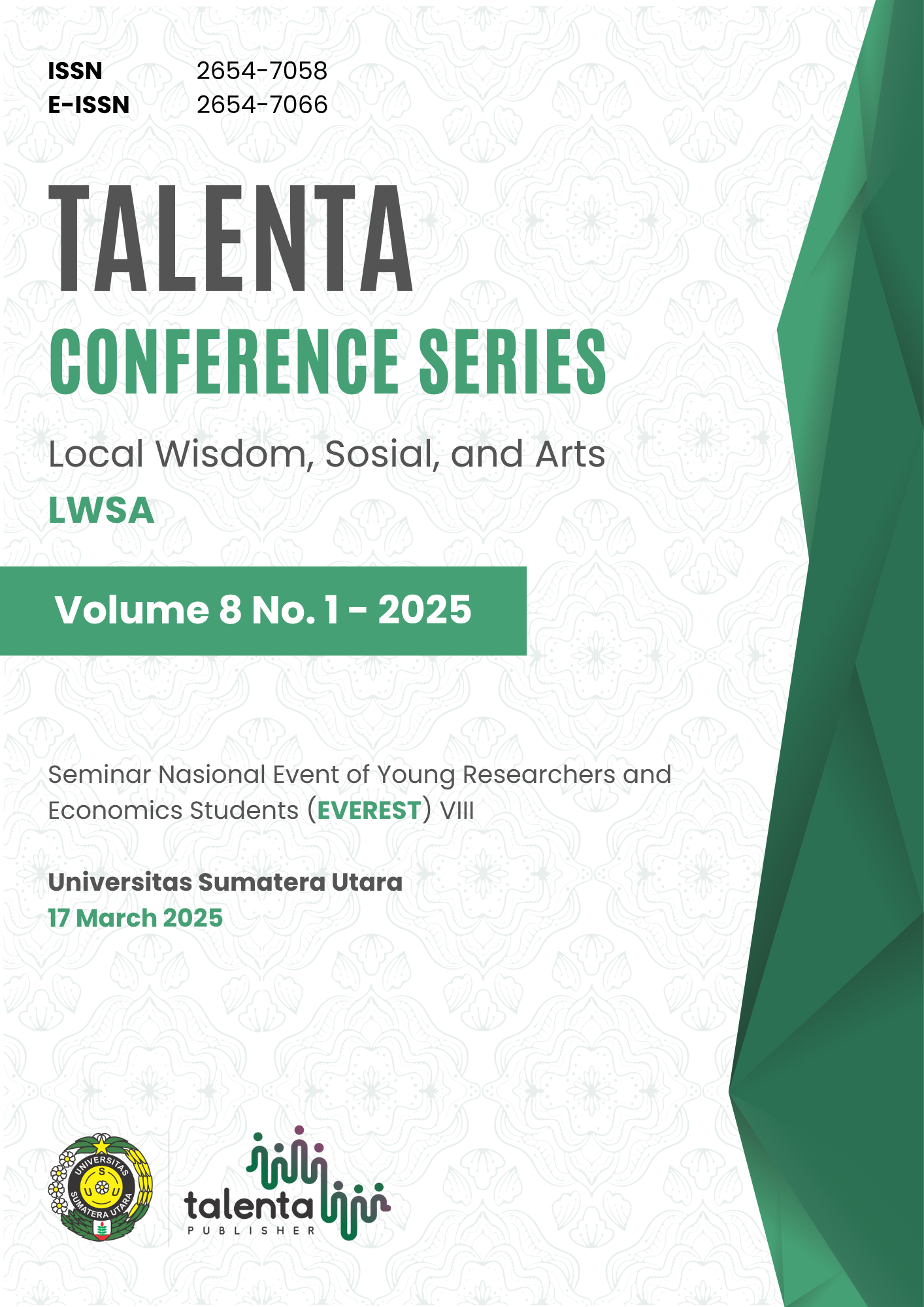The Effect of Labor Force, Minimum Wage, and Per Capita Income on Unemployment Rate in Five Southeast Asian Countries
| Authors | ||
| Issue | Vol 8 No 1 (2025): Talenta Conference Series: Local Wisdom, Social, and Arts (LWSA) | |
| Section | Articles | |
| Section |
Copyright (c) 2025 Talenta Conference Series  This work is licensed under a Creative Commons Attribution-NonCommercial-NoDerivatives 4.0 International License. |
|
| Galley | ||
| DOI: | https://doi.org/10.32734/lwsa.v8i1.2409 | |
| Keywords: | unemployment rate labor force minimum wage per capita income | |
| Published | 2025-02-28 |
Abstract
This study aims to analyze the factors that affect the unemployment rate in five Southeast Asian countries, namely the labor force, minimum wage, and income per capita both partially and simultaneously. The type of data used in this research is secondary data with descriptive quantitative method. The objects in this study are five countries that are included in the emerging market category in Southeast Asia. This study uses panel data by combining time series data and cross section data for 8 years, starting from 2016-2023. The independent variables used are labor force, minimum wage, and per capita income, while the dependent variable is the unemployment rate. The analysis model in this study is the Fixed Effect Model (FEM) using Eviews 12 as an estimation tool. The regression results show that partially, the labor force and income per capita have a negative and significant effect on the unemployment rate, while the minimum wage has a positive and significant effect on the unemployment rate. Simultaneously, labor force, minimum wage, and per capita income together affect the unemployment rate in five Southeast Asian countries.






